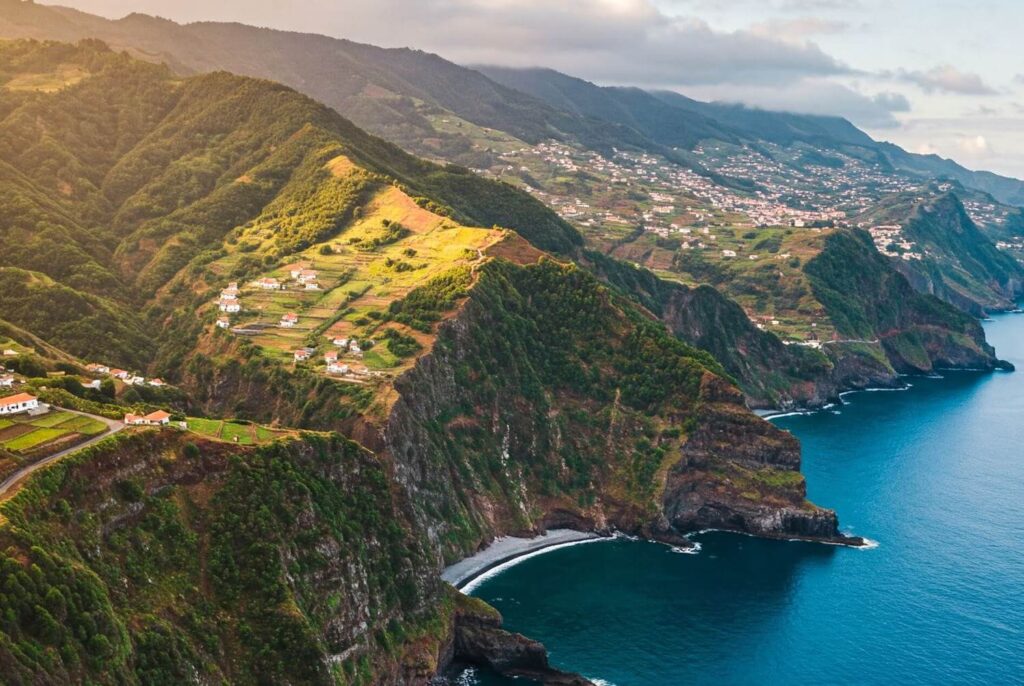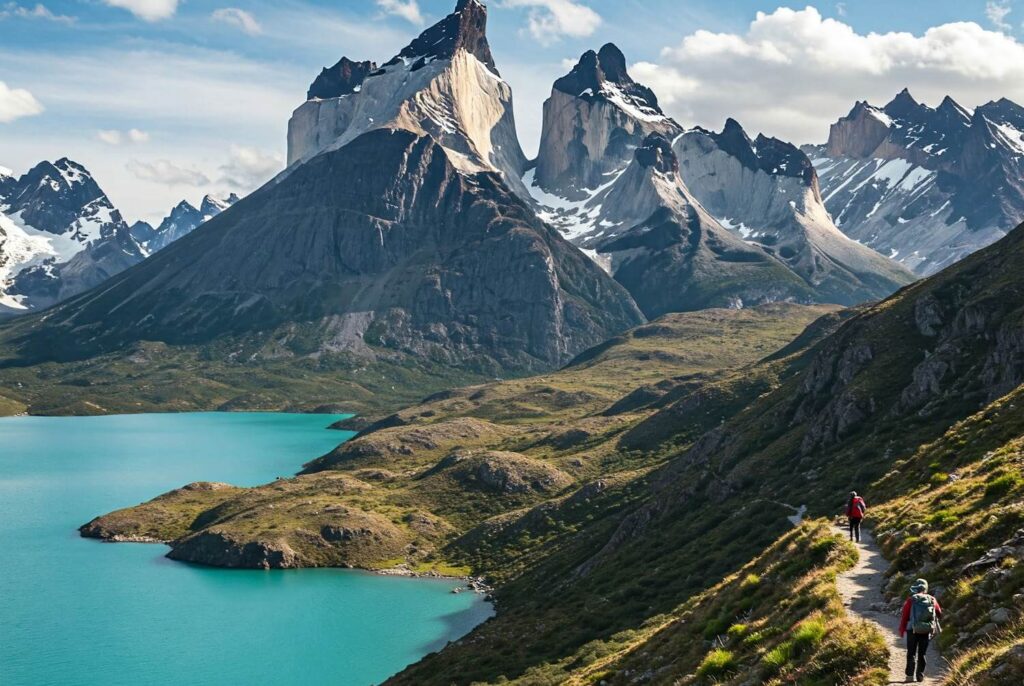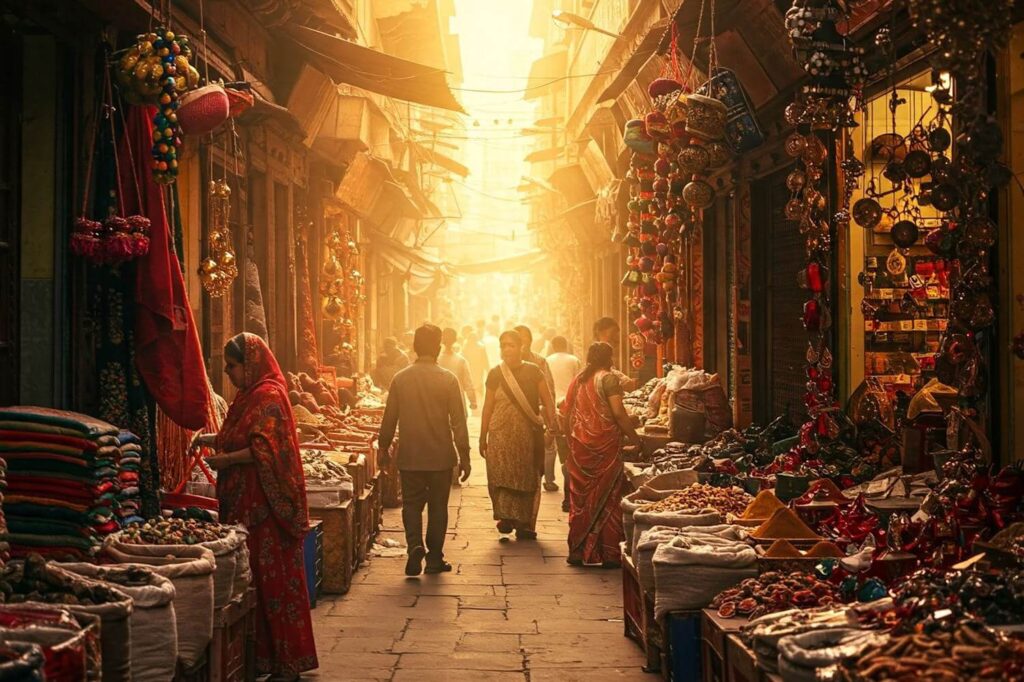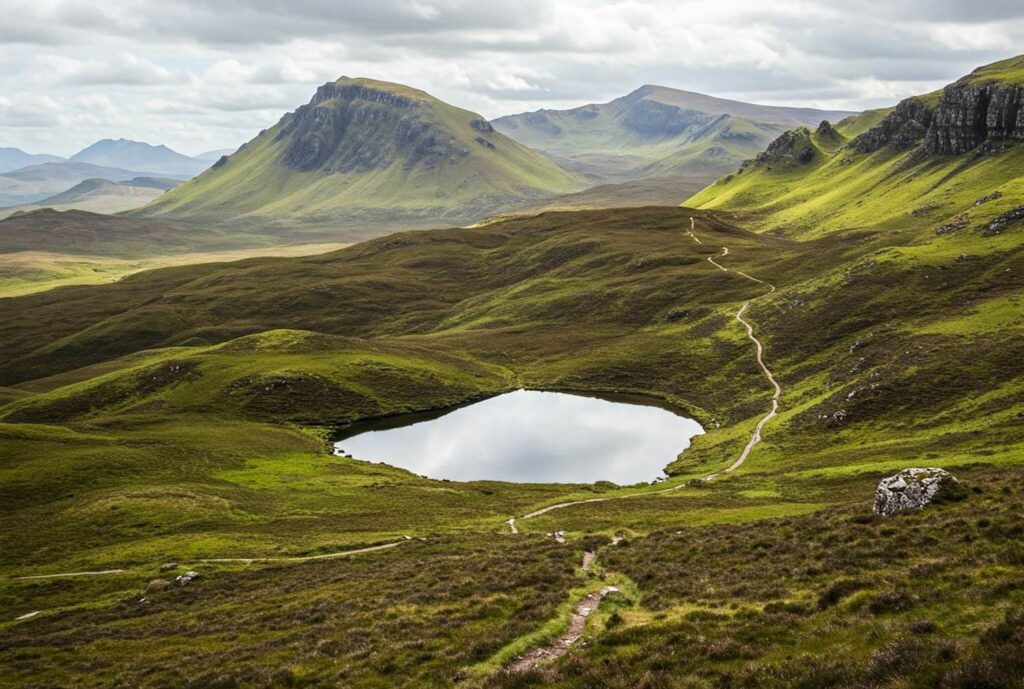Introduction to Madeira
Madeira, an archipelago located in the North Atlantic Ocean, is renowned for its breathtaking natural landscapes and unique ecosystems, making it a premier destination for hiking enthusiasts. This Portuguese territory is characterized by its steep cliffs, lush forests, and stunning coastline, providing a diverse range of trails that cater to all levels of hikers. The island’s rugged terrain is shaped by volcanic activity, resulting in extraordinary geographical features that captivate both adventurers and nature lovers alike.
The island’s subtropical climate plays a significant role in maintaining its vibrant ecosystem. With an abundance of rainfall, the flora is diverse, ranging from subtropical plants to endemic species exclusive to the region. These diverse habitats are home to various wildlife, providing hiking trails with opportunities to encounter unique fauna, further enriching the hiking experience. The Laurisilva forest, a UNESCO World Heritage site, exemplifies Madeira’s ecological significance and offers some of the most picturesque hiking routes on the island, appealing to both casual walkers and seasoned trekkers.
In addition to its striking natural beauty, Madeira boasts a rich cultural heritage influenced by various civilizations over time. The island’s history is woven into its hiking trails, where ancient levadas – or irrigation channels – offer insight into the traditional agricultural practices and craftsmanship of local inhabitants. These historical trails are not only functional but have become popular routes for hikers looking to immerse themselves in the island’s culture while enjoying panoramic views of the mountainous landscape.
Overall, Madeira’s stunning scenic vistas, varied hiking pathways, and vibrant ecosystems make it an exceptional choice for outdoor enthusiasts. Whether seeking a leisurely hike or a challenging trek, visitors are sure to discover the island’s unique allure, solidifying Madeira’s status as a hiker’s dream destination.
Top Hiking Trails in Madeira
Madeira, known for its breathtaking landscapes and diverse flora, offers a multitude of hiking trails that cater to various skill levels. Among the most renowned trails on the island is the Levada do Caldeirão Verde. This relatively easy hike spans approximately 13 kilometers and typically takes around 4 to 5 hours to complete. This trail winds through lush forests and alongside stunning levadas, or irrigation channels, leading to the mesmerizing Caldeirão Verde waterfall, which is a rewarding sight at the hike’s terminus.
Another hike that stands out is the climb to Pico Ruivo, the highest peak in Madeira, reaching an elevation of 1,862 meters. This trail, while moderately challenging, offers an exhilarating experience with a distance of about 7.6 kilometers from Achada do Teixeira. Hikers can expect a journey of about 2.5 to 3 hours, with diverse landscapes featuring rocky terrains and stunning panoramic views of the surrounding mountains and valleys. The effort is well worth it, as reaching the summit provides a unique perspective of Madeira’s rugged beauty.
For those drawn to the allure of cascading water, the Vereda dos 25 Fontes is an exceptional choice. This trail covers around 4.5 kilometers and generally takes 3 to 4 hours to traverse. As hikers follow this scenic path, they are treated to a display of 25 natural springs and picturesque waterfalls, all encapsulated within a verdant setting of laurel forests. The trail’s moderate difficulty level makes it accessible, yet it presents enough challenge to keep even experienced hikers engaged as they immerse themselves in the vibrant flora and fauna of the region.
Essential Hiking Gear for Madeira
When preparing for a hiking adventure in Madeira, selecting the appropriate gear is vital for both safety and enjoyment. Given its varied terrain and microclimates, hikers must pack equipment that accommodates the island’s diverse conditions. First and foremost, suitable footwear is essential. Hiking boots with ankle support, good grip, and waterproof lining are recommended to handle the rugged trails and potential rain. For those who prefer lighter options, a pair of well-fitted trail running shoes can also suffice on drier paths.
Clothing should be layered to adapt to the changing weather, which can shift rapidly throughout the day. Start with a moisture-wicking base layer, followed by an insulating mid-layer, and finish with a waterproof and windproof outer shell. Accessories like hats and gloves may also be necessary, particularly at higher elevations. It is prudent to check the weather forecast before embarking on your hike, ensuring that you are prepared for any eventuality.
Hydration is crucial during hikes, and carrying a hydration system such as a water bottle or a hydration pack is advisable. This allows hikers to maintain fluid levels without the hassle of stopping frequently. Alongside hydration, nutritious snacks like energy bars, nuts, or dried fruit are essential to provide sustained energy throughout your trek.
Specific items can enhance your hiking experience in Madeira’s unique environments. Trekking poles can provide additional stability on steep or rocky paths. A reliable backpack is important for carrying your gear comfortably, and carefully sized packs with supportive straps can make a significant difference during long hikes. Lastly, a map or GPS device is essential for navigating the island’s intricate trail system, helping you stay oriented and explore its natural beauty with confidence.
Best Time to Visit for Hiking
Madeira, with its diverse landscape and mild climate, offers a splendid hiking experience year-round. However, the ideal times for hiking on the island are during the spring and fall seasons. From March to May, spring is characterized by moderate temperatures and blooming flora, creating picturesque trails adorned with vibrant flowers. This season not only enhances the natural beauty of the island but also ensures that hikers enjoy pleasant weather, making it an opportune time for excursions.
In spring, temperatures generally range between 15°C and 20°C, providing a comfortable environment for outdoor activities. Additionally, the trails are less crowded compared to the summer months, allowing for a more tranquil experience. This period also sees some local events and festivals that reflect Madeira’s rich culture, adding an element of excitement to hiking adventures. Visitors in spring can partake in the Madeira Flower Festival, celebrating the island’s floral heritage with vibrant parades and exhibitions, which can be a unique complement to any hiking itinerary.
Fall, particularly from September to November, offers another excellent window for hiking. The weather remains warm, with temperatures ranging from 18°C to 25°C, perfect for long walks on the island’s stunning levadas and mountainous terrain. The trails witness fewer tourists during this season, which enhances the experience for avid hikers seeking solitude amid nature. Autumn also presents a chance to witness the transformation of Madeira’s vegetation, with leaves changing color, creating a breathtaking backdrop for hikers.
Choosing the right time to explore Madeira’s numerous trails is essential for enjoying the full spectrum of its natural beauty and cultural richness. In conclusion, both spring and fall stand out as ideal seasons for hiking, and participating in local events during these months can significantly enrich the overall experience. Understanding these seasonal nuances makes planning a hiking trip to Madeira a worthwhile endeavor for outdoor enthusiasts.
Safety Tips and Considerations
When embarking on a hiking adventure in Madeira, it is paramount to prioritize safety by understanding the unique environmental factors and terrain associated with the island. The dynamic weather conditions can change rapidly, so it is advisable to check the local forecast regularly. Mountainous areas may experience sudden fog or rain, which can hinder visibility. Therefore, wearing appropriate clothing and gear designed for varying temperatures and conditions is crucial for an enjoyable experience.
Hikers are encouraged to remain on designated trails. The marked paths not only promote the preservation of the island’s natural beauty but also provide a safer route through potentially treacherous terrain. Off-trail hiking can lead to accidents or getting lost, as Madeira’s landscape can include steep cliffs and dense vegetation. Utilizing maps or trail guides beforehand will enhance the hiking experience and reduce uncertainties.
For those considering solo hiking, it is essential to take extra precautions. Always inform a friend or family member of your planned itinerary, estimated time of return, and the specific trails you intend to explore. This not only ensures accountability but also aids rescue efforts should emergencies arise. Additionally, carrying a fully charged mobile phone, having access to a portable charger, and possessing a basic first aid kit can prove invaluable during unexpected situations.
Awareness of local wildlife and understanding how to coexist with them safely is another consideration. While Madeira is not known for dangerous animals, it is wise to be cautious and respect their habitats. Observing wildlife from a safe distance is preferable, and it is wise to refrain from feeding any animals encountered along the trails. Lastly, familiarize yourself with local emergency protocols—knowing whom to contact in case of an accident can significantly enhance your safety while hiking in this stunning island paradise.
Cultural Experiences Along the Trails
Hiking in Madeira offers more than just breathtaking landscapes; it also provides an enriching cultural immersion that enhances the overall experience. As hikers traverse the island’s diverse trails, they often encounter various cultural landmarks, from traditional villages to historical sites that reflect the rich heritage of the region. Each trail offers a unique opportunity to engage with the local culture, making every hike an adventure in learning.
One key aspect of hiking in Madeira is the chance to explore quaint towns such as Santana and Monte, where visitors can witness traditional Madeiran architecture, notably the famous thatched houses in Santana. These villages often feature local artisan markets, inviting hikers to experience the island’s handicrafts and culinary delights. Sampling local specialties, such as “espetadas” (grilled meat skewers) and “bolo do caco” (traditional bread), not only pleases the palate but also provides insight into Madeiran culinary traditions.
Moreover, engaging with local residents can significantly enhance the hiking experience. Many locals are eager to share stories about their heritage and the significance of the trails. Whether through guided tours or casual conversations, these interactions can enrich hikers’ understanding of the historical context of specific landmarks. For instance, hiking to the impressive viewpoints at Pico do Arieiro and Pico Ruivo, one can often find seasoned hikers who are happy to recount tales of past expeditions and local legends, contributing to a sense of community and connection.
Indeed, the cultural dimensions of hiking in Madeira are intricate and multifaceted. The blend of natural beauty and rich cultural experiences makes this island an exceptional destination for hikers seeking more than just physical challenges. By immersing themselves in the local culture, hikers can create lasting memories and deepen their appreciation for the stunning island of Madeira.
Sustainable Hiking Practices
Hiking in Madeira presents an extraordinary opportunity to immerse oneself in the island’s breathtaking landscapes and lush biodiversity. However, it is imperative that hikers adopt sustainable practices to ensure the preservation of this remarkable environment for future generations. One widely recognized approach is the “Leave No Trace” principles, which advocate for responsible outdoor ethics. These principles guide hikers to minimize their impact by staying on designated trails, packing out all waste, and avoiding the disturbance of natural habitats.
Respecting wildlife and plant life is another crucial element of sustainable hiking. Madeira is home to numerous endemic species, and it is vital to appreciate their beauty without disrupting their natural ecosystems. Hikers should observe all flora and fauna from a distance and refrain from picking plants or feeding animals, as these actions can have detrimental effects on the delicate balance of the island’s biodiversity. Awareness of seasonal changes and wildlife behaviors can further enhance the hiking experience while encouraging responsible interactions with nature.
Minimizing impact on trails is essential for maintaining the integrity of Madeira’s hiking paths. Hikers are encouraged to avoid cutting corners on switchbacks, which can lead to trail widening and soil erosion. Instead, following the marked pathways not only preserves the trails but also keeps hikers safe. Utilizing eco-friendly hiking gear, such as biodegradable products and reusable containers, can significantly reduce one’s ecological footprint during outdoor activities.
Ultimately, every hiker plays a pivotal role in conserving Madeira’s untouched beauty. By adopting sustainable hiking practices, individuals can contribute to the protection of the island’s diverse ecosystems. With careful consideration and a commitment to responsible hiking, it is possible to enjoy the natural wonders of Madeira while actively participating in their preservation.
Planning Your Hiking Itinerary
When gearing up for a hiking experience in Madeira, careful planning of your hiking itinerary is essential to ensure an enjoyable and fulfilling journey. Madeira is renowned for its dramatic landscapes and diverse trails, offering opportunities for both novice and experienced hikers. The first step in forming your itinerary is to identify the hiking routes that match your physical fitness level and interests. Popular trails such as the Levada do Caldeirão Verde or the Pico do Arieiro to Pico Ruivo offer captivating scenery but vary in difficulty and time commitment.
It is crucial to allocate sufficient time for each hike while factoring in the possibility of scenic stops. Madeira’s breathtaking views and unique flora can lure you into stopping often, so consider adding extra time for photography and exploration. For instance, a typical hike along one of the island’s levadas, which are irrigation channels, might take around 4-6 hours, but adding sightseeing can prolong this time substantially. Thus, a flexible itinerary allows you to embrace the beauty of each moment without feeling rushed.
Accommodations play a significant role in your hiking plan. Opt for lodging that is conveniently located near the hiking trails. This approach minimizes travel time and maximizes your hiking schedule. There are numerous options ranging from hotels to cozy guesthouses; many provide amenities like packed lunches and shuttle services to trailheads, enhancing your overall experience. Additionally, public transportation, including buses and taxis, is readily available and can facilitate your travel across the island, making it easier to access various trekking locations.
In summary, by focusing on thoughtful route planning, reasonable time allocations, strategic lodging selections, and efficient transportation methods, you can create a balanced hiking itinerary that maximizes enjoyment while exploring the stunning island of Madeira.
Conclusion: Embracing the Madeira Hiking Experience
As we reflect on the extraordinary hiking opportunities found on the island of Madeira, it is essential to recognize the unique blend of stunning natural landscapes, rich cultural heritage, and the rewarding physical challenges that this destination presents. From the dramatic cliffs and lush valleys to the terraced vineyards and charming villages, Madeira captivates hikers with its diverse environments, making it an exceptional choice for outdoor enthusiasts.
The island’s extensive network of trails, including the renowned levadas, offers hikers a chance to explore the lush greenery and breathtaking views that define Madeira’s geography. Each trail unveils unique facets of the island, whether it is the shimmering coastline or the serene mountains. This variety ensures that hikers of all skill levels can find routes that suit their preferences, whether they seek a leisurely stroll or a demanding trek.
Moreover, amalgamated within the experience of hiking in Madeira is the opportunity to immerse oneself in the island’s culture. The hospitable locals, traditional Madeiran cuisine, and vibrant festivals enrich the journey, providing personal connections that a simple hike can foster. Pedestrians will encounter not only the natural beauty but also the stories and customs that shape Madeira’s identity.
The physical challenge that hiking encompasses serves as a monumental benefit. As you traverse the island’s trails, the invigorating activity encourages a sense of achievement, contributing not only to physical health but also to mental well-being. Embracing the hiking experience in Madeira stimulates both body and mind, making it a destination to treasure.
In light of these captivating qualities, one cannot overlook the allure of Madeira as a premier hiking destination. By embracing this adventure, hikers are invited to discover the extraordinary landscapes and cultural wonders that await on this remarkable island.





